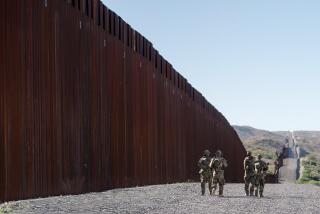Fleeing bloodshed, poverty and despair, immigrant asylum seekers line up in the desert

The yip-howls of coyotes cut through the night as an almost full moon sets to the west, where only I-beam barricades stand silently, marking the U.S. border with Mexico through this largely agricultural section of the Sonoran Desert.
This is where, except for Mexicans, many of the migrants from throughout the world who are seeking asylum take their first steps onto American soil and turn themselves in to U.S. Customs and Border Protection in Somerton, Ariz.
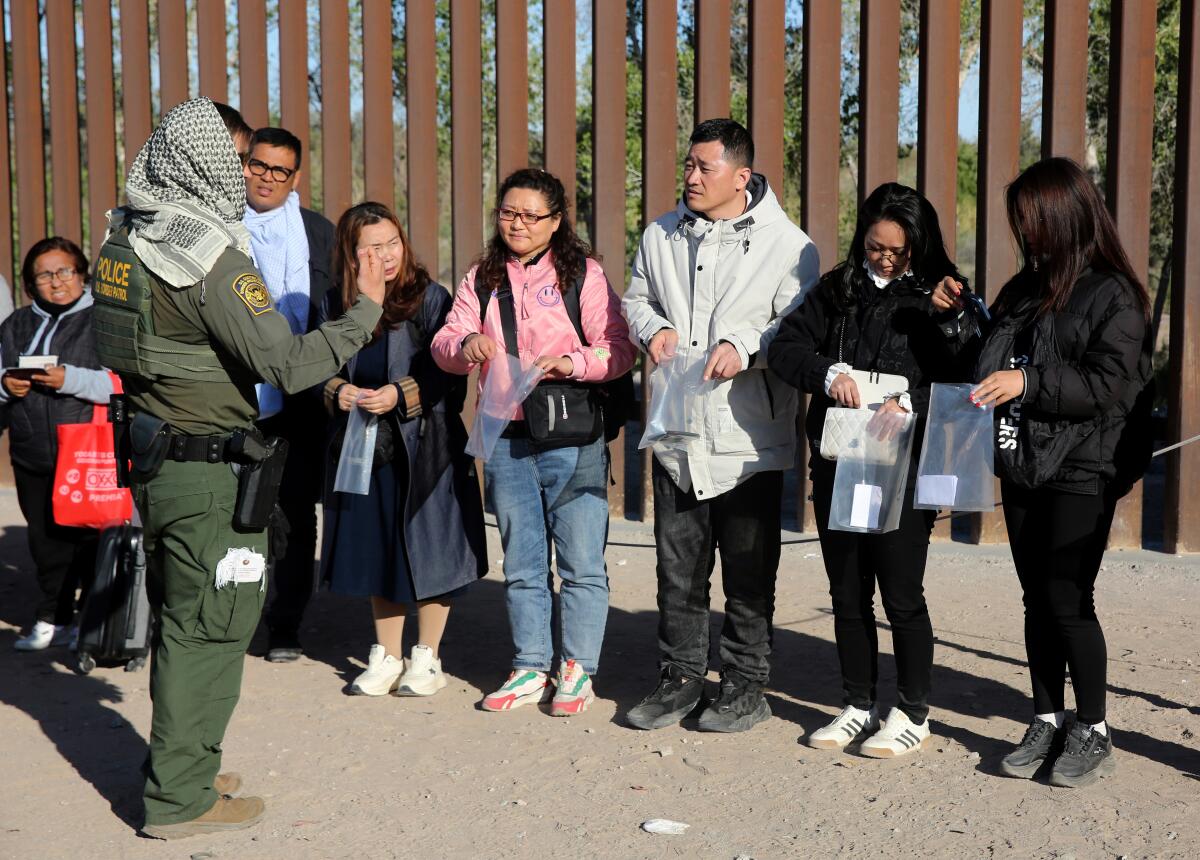
According to a Customs and Border Protection officer who did not want to be identified because he did not have permission to speak to the media, Mexican nationals who try to cross here do it as stealthily as as they can and run toward Yuma, fearing that they’ll be sent back immediately if caught.
“The overwhelming majority of the Yuma sector apprehensions are picked up at that location, because the overwhelming majority [whom] they apprehend are nontraditional migrants from nontraditional locations,” John Mennell, a spokesman for Customs and Border Protection’s Arizona sector, said in a phone interview, referring to the crossing at the Cocopah Reservation.
At night, when most migrants make the crossing, a cold wind whips through this desolate strip of desert straddling the border on Cocopah Indian Tribe land. Here, there is no tall metal fence to stop anyone from entering the United States. Migrants walk into the country freely.
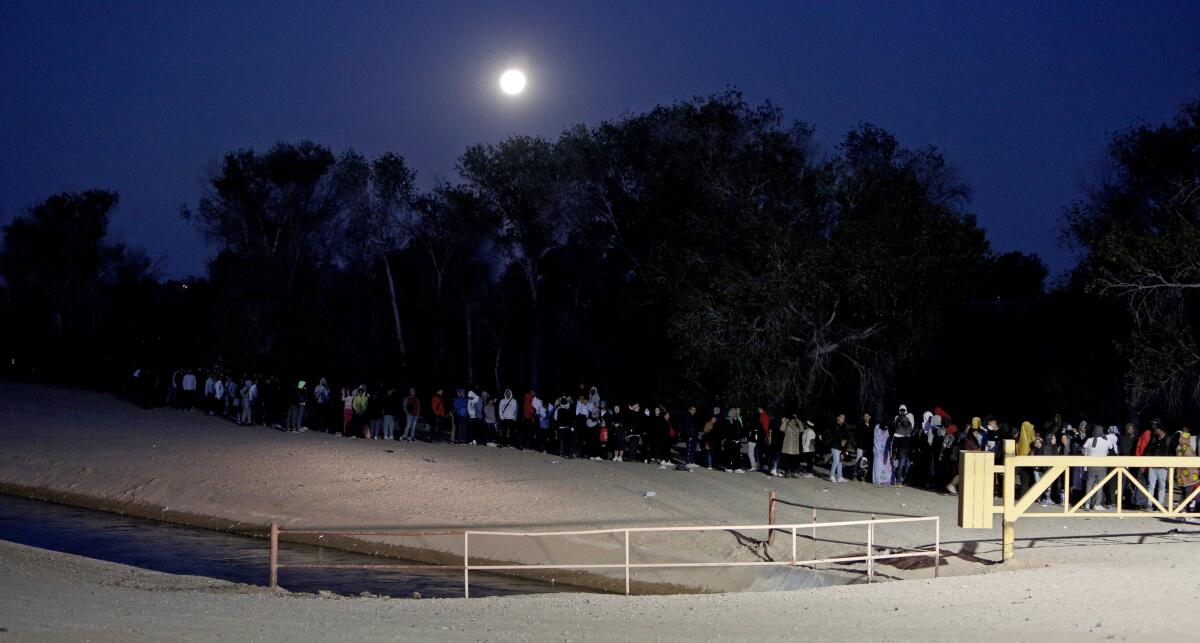
The shallow Colorado River, flowing south through the dry, sandy landscape, is back toward Mexico. On the American side, large swaths of green farmland along large irrigation canals can be seen for miles.
Many asylum seekers are gathering at the border in anticipation of the U.S. government’s planned lifting of Title 42 on Thursday. Since March 2020, the decades-old measure has been used by both the Trump and Biden administrations to invoke a public health order from the federal Centers for Disease Control and Prevention intended to prevent the spread of the virus that causes COVID-19.
But Title 42 has stayed in place even as the pandemic has receded, effectively blocking asylum seekers and other migrants from legally entering the United States, and allowing border officials to immediately expel them to Mexico regardless of their nationality. The anticipated lifting of the order has provided a glimmer of hope to those seeking refuge from a ruined economy in Venezuela, bloodshed in Nigeria or state repression in China.
“They are coming across to surrender … and hopefully enter the asylum process,” said Mennell. He added that Mexicans do not wait around at this location because they would be expelled under Title 42.
Men, women and children, some alone, others in groups of family or friends, congregate at this spot after days or months spent traveling. They patiently stand in line and wait for border officers to transport them to the Customs and Border Protection processing center in Yuma.
Mennell believes that some come to take advantage of the asylum system.
“There’s so many people who say they’re asylum seekers, but lot of times they’re asylum seekers in order to use the system,” he said. “They don’t understand the asylum system and they don’t understand the requirements to claim asylum and the process. They just know that if they come up and they answer the questions the right way, they will get released.”
Toluwase Oladele Thomas, 47, came with two friends from Nigeria.
“I have relatives in Chicago,” he said. “There is one issue in our area. Our king was killed and they want to kill us.”
So Thomas and his friends fled. They first flew to Brazil, then made their way “for more than one month” to this crossing.
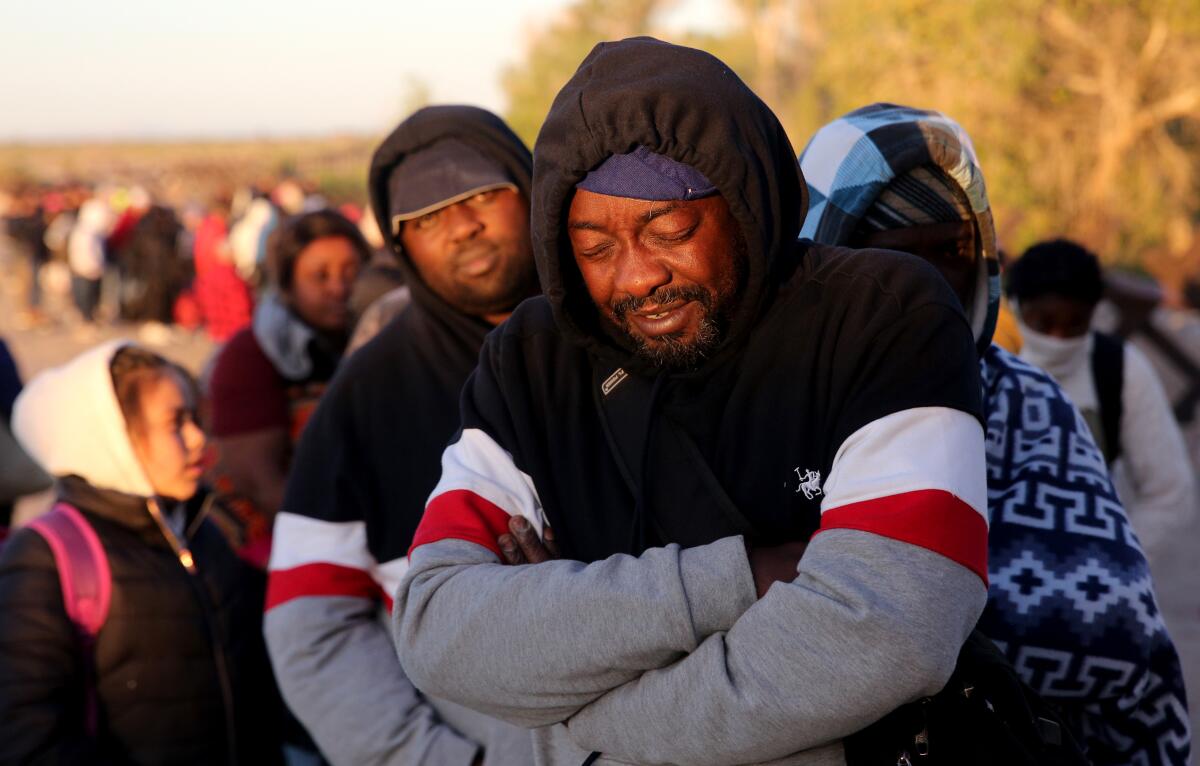
None of the people waiting one day last week to be processed by border officials were from Mexico. They came from Central and South America and Africa, as well as from the Middle East, the Indian subcontinent, Europe and China.
“Those picked up in Somerton are taken to the central processing center in Yuma,” Mennell said. “From Yuma, they can be expelled back to Mexico or processed and placed in detention with Enforcement and Removal Operations,” a branch of U.S. Immigration and Customs Enforcement (ICE), which may choose to place them in alternative detention or release them on their own recognizance.
“Generally, [migrants] are made aware of services available to them,” because once they are processed for release they are technically out of the border agency’s custody, he added.
“We can’t tell them where to go; we have no input on where they go,” Mennell said. “They are free to move about the country and go where they need to go.”
A large white tent and metal posts with rope stand next to where the 20-foot-plus metal fence begins and Cocopah Tribe land ends. Here, Customs and Border Protection officers check migrants’ identities and take their photographs before having them board official vehicles.
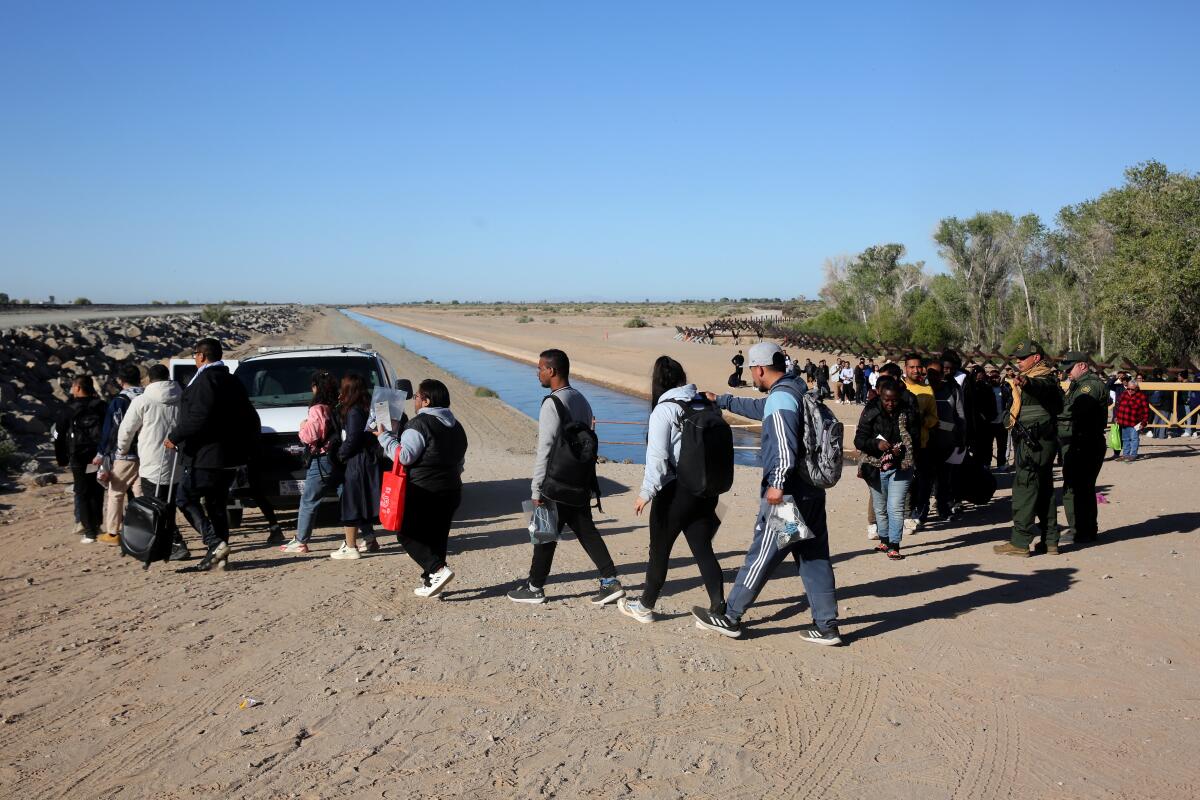
Vans that can take up to 17 people and buses that carry twice as many are used until the migrants who arrived each day, sometimes 300 or more, are gone.
Luis Orellana, 23, of Nicaragua walked and hitched rides for a month to get to this spot. His will to survive is bringing him closer to Miami and his grandmother.
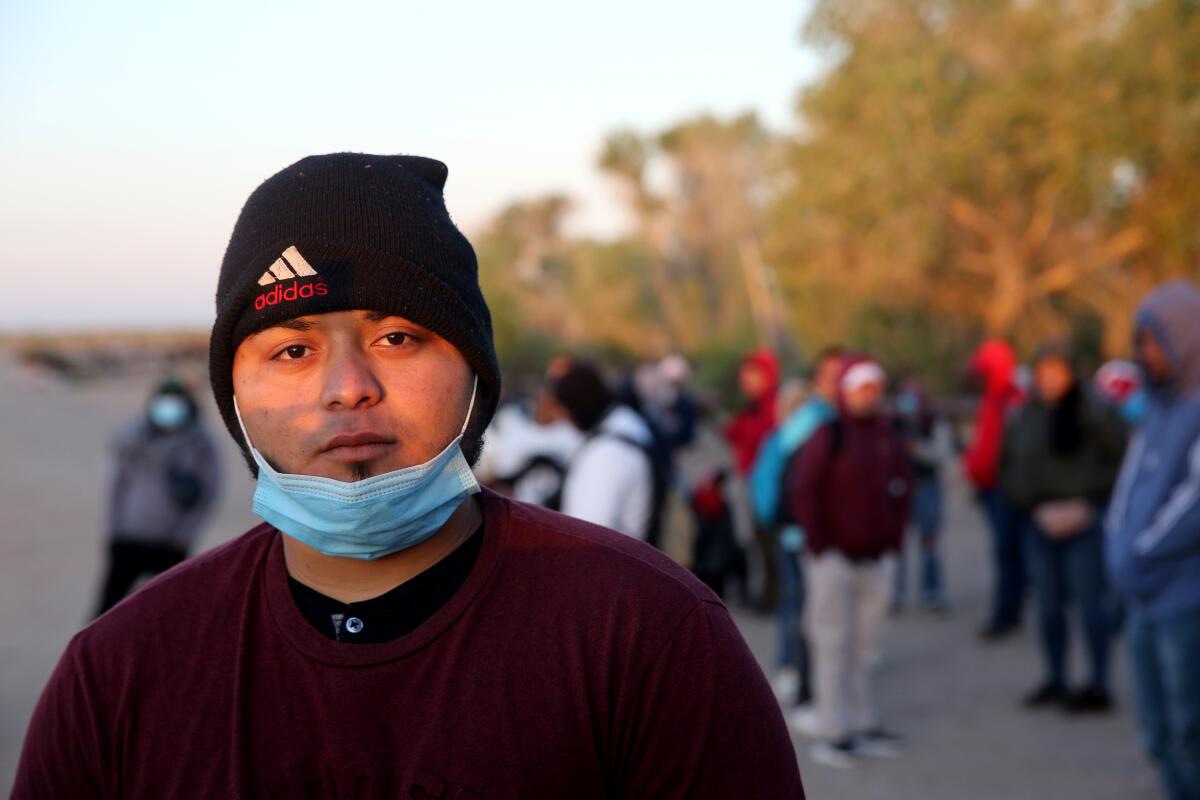
“My grandmother is sick in Miami. She will have surgery, and I want to help by finding work at whatever there is,” he said in Spanish as he waited for sunrise. Orellana said that while making his way north, he stopped every few days to work at farms or wherever he could to earn enough money to keep traveling.
His grandmother, Argentina Alvarado, reached by telephone in Miami, said she was happy that her grandson had crossed the border. She knew he was making his way to Miami but didn’t know when he would arrive.
“I hope [U.S. officials] will allow him to stay,” she said in a raspy voice. ”I haven’t seen him in six or seven years. He was a young boy.”
As dozens of migrants hunkered down last week, fending off the chill, a border officer lifted one slumping 29-year-old male onto his shoulders and carried him to a pickup truck, where he was administered oxygen and his vital signs were checked.
An ambulance soon arrived to take him for further medical treatment. Another migrant was already sitting on the tailgate of the truck, self-administering some type of shot to her left arm.
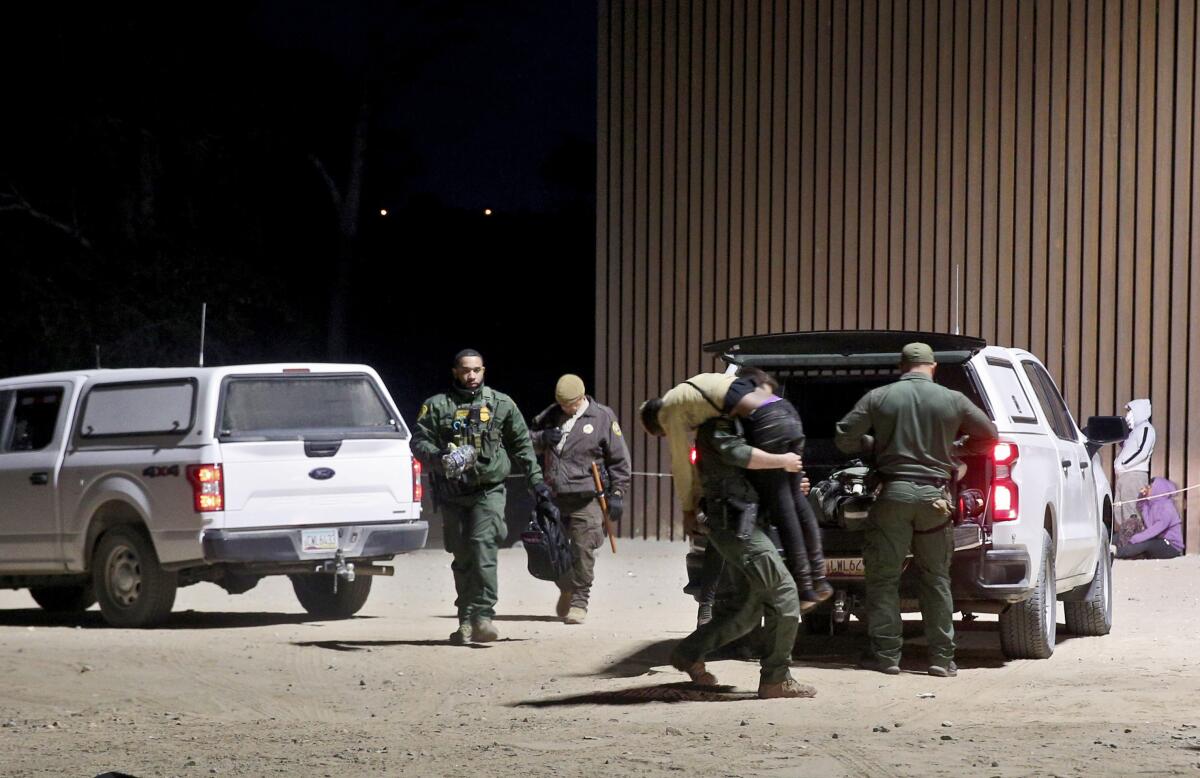
Mary Otaiyi, 33, of Nigeria, carried her sleeping 4-year-old on her back while holding her 10-year-old’s hand. She said they had flown to Brazil, then walked and bused through Bolivia, Peru and onward into Mexico, taking a month to get to America.
”I came for a good life for my kids,” she said. “I have no relatives here and no job in Nigeria.”

Later that morning, as 13 to 17 people at a time boarded vans, 3-year-old Lian Cornejo squatted and drew circles on the sandy ground with a rock while his mother, Paoloa Fano, 30, of Peru, waited to be processed by border officers. Fano came to America because she has family in Virginia.
“I have no more family in Peru,” she said. She and her little boy had traveled for a week to get to the border, taking buses along the way.

Colombian Vivian Ordoñez, 39, kept her two daughters close to her. She had only a backpack with essential toiletries. Ordoñez said her husband was murdered in Bogotá and she feared for her life.
One daughter, 15, carried a U.S. passport, having been born in New York City. Her younger daughter, 10, was born in Colombia, which Ordoñez said she returned to when her eldest daughter was a year old. Ordoñez said she also has a 21-year-old son who is an American citizen living in Queens, where she hopes to meet with him soon.

Ordoñez and her daughters had flown from Colombia to Mexico City, then took a bus to nearby Mexicali, Baja California, and were dropped off about a mile from the border, she said. The three then walked with dozens of others on a trail through the desert, crossed the Colorado River, and arrived at the I-beam barricades around 3 a.m.
Contacted by phone in Queens, her nephew Marlon Ordoñez, 26, said he was glad to hear that his aunt and cousins were on their way. He was also expecting to hear from his mother, Monica Ordoñez.
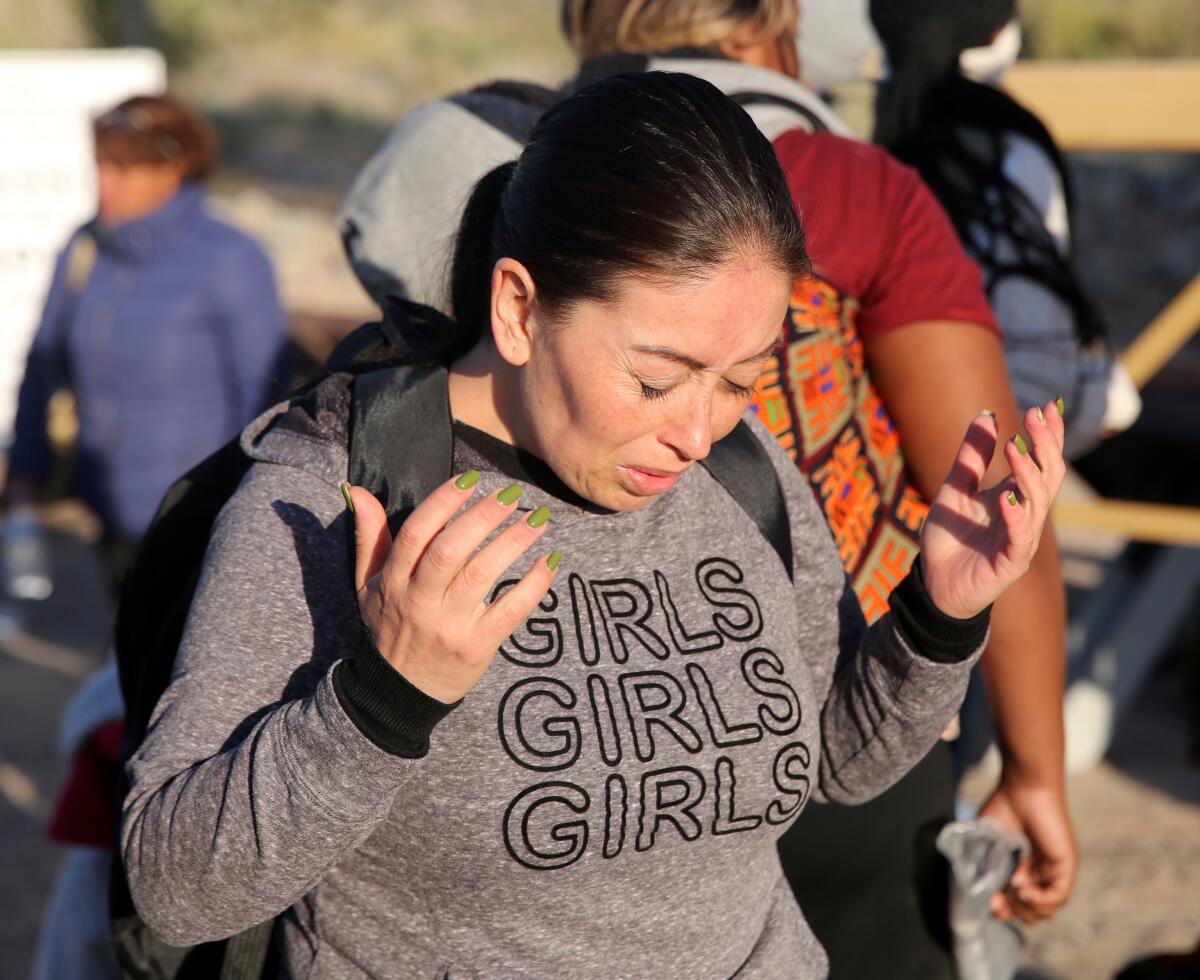
“I’m glad to hear about my aunt and cousins, but I need to hear from one other person,” he said, referring to his mother. “I’m happy, happy, happy to know they are fine.”
A group of five migrants from Senegal took a month to reach the border after flying to Honduras. Another migrant, from Punjab, India, took 10 months to get here, while his friends alongside him had needed only one month. All have relatives in New York, where they hope to make a new life.
“Citizenship and Immigration Services decide whether somebody has a credible fear of return to their country of origin, and is it the judge who decides to grant asylum or not,” said Mennell, adding that the agency can also grant asylum in certain cases.
Leslie Hernandez, 17, of San Miguel, El Salvador, traveled to the border alone by bus. She met people from Colombia along the way and crossed the Colorado with them.
“They are a large family and she wants to help her father,” her aunt Rosibel Cruz Hernandez said by phone from Silver Spring, Md.

“Her parents are in El Salvador and she came to study and to work. [Her mother] did not want to let her come, but Leslie wanted to come,” Cruz Hernandez said, adding: “She would tell me, ‘Aunt, help me; I want to study and work to help my dad.’”
Cruz Hernandez agreed to take Leslie in only if her parents allowed her to come because she did not want to be blamed if something happened to her niece, she added.
“If unaccompanied minors are found, they are processed at the Yuma processing center and then turned over to Health and Human Services’ Office of Refugee Resettlement,” Mennell said.
Katerine Davila, 22, of Lima, Peru, said she had escaped a kidnapping attempt by a cab driver. She was able to jump out of the vehicle at a stop sign.
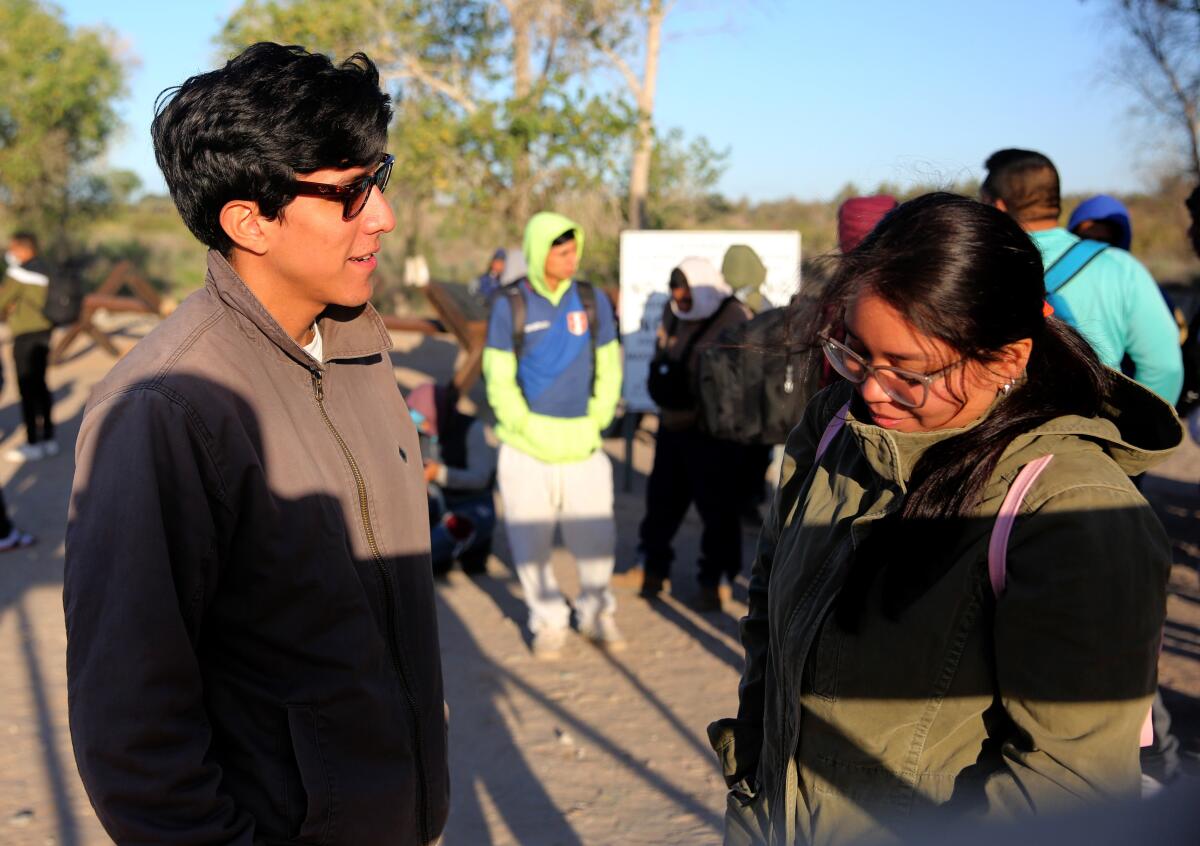
“But I was pressured not to file charges,” she said.
She began getting phone calls from different numbers, and unknown vehicles were driving by her home. Fearing for their lives, she and her boyfriend, Renzo Saldaña, 26, decided to flee to America. They took a flight from Lima to Mexico City then flew to Mexicali.
Saldaña’s father, Walter Saldaña, reached by telephone at home in Liverworth, Tenn., was taken by surprise to hear they were at the border.
“They came without telling me; I did not know they were coming,” he said. But he was not surprised by the reason why.
“There is delinquency, crimes and great corruption in Peru,” he said. “There is no work, and the government is turning like the one from Venezuela or Bolivia.”
“I am willing to help them here. I have property, a home, rooms for them, and I can help them economically,” the elder Saldaña continued. He hadn’t seen his son since 2019 and hadn’t spoken to him much, but said he was willing to do what he could to help him and his girlfriend.

More to Read
Start your day right
Sign up for Essential California for news, features and recommendations from the L.A. Times and beyond in your inbox six days a week.
You may occasionally receive promotional content from the Los Angeles Times.

